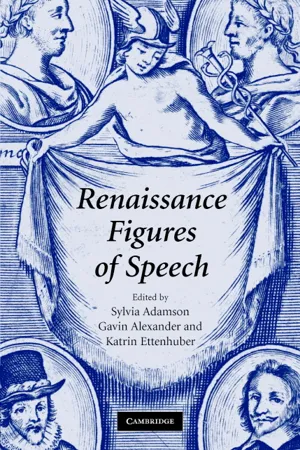
- English
- PDF
- Available on iOS & Android
Renaissance Figures of Speech
About this book
The Renaissance saw a renewed and energetic engagement with classical rhetoric; recent years have seen a similar revival of interest in Renaissance rhetoric. As Renaissance critics recognised, figurative language is the key area of intersection between rhetoric and literature. This book is the first modern account of Renaissance rhetoric to focus solely on the figures of speech. It reflects a belief that the figures exemplify the larger concerns of rhetoric, and connect, directly or by analogy, to broader cultural and philosophical concerns within early modern society. Thirteen authoritative contributors have selected a rhetorical figure with a special currency in Renaissance writing and have used it as a key to one of the period's characteristic modes of perception, forms of argument, states of feeling or styles of reading.
Frequently asked questions
- Essential is ideal for learners and professionals who enjoy exploring a wide range of subjects. Access the Essential Library with 800,000+ trusted titles and best-sellers across business, personal growth, and the humanities. Includes unlimited reading time and Standard Read Aloud voice.
- Complete: Perfect for advanced learners and researchers needing full, unrestricted access. Unlock 1.4M+ books across hundreds of subjects, including academic and specialized titles. The Complete Plan also includes advanced features like Premium Read Aloud and Research Assistant.
Please note we cannot support devices running on iOS 13 and Android 7 or earlier. Learn more about using the app.
Information
Table of contents
- Cover
- Half-title
- Title
- Copyright
- Dedication
- Contents
- List of illustrations
- List of contributors
- Preface
- Note on spelling and references
- Introduction: the figures in Renaissance theory and practice
- CHAPTER 1
- CHAPTER 2
- CHAPTER 3
- CHAPTER 4
- CHAPTER 5
- CHAPTER 6
- CHAPTER 7
- CHAPTER 8
- CHAPTER 9
- CHAPTER 10
- CHAPTER 11
- CHAPTER 12
- CHAPTER 13
- Notes
- Suggestions for further reading
- Index